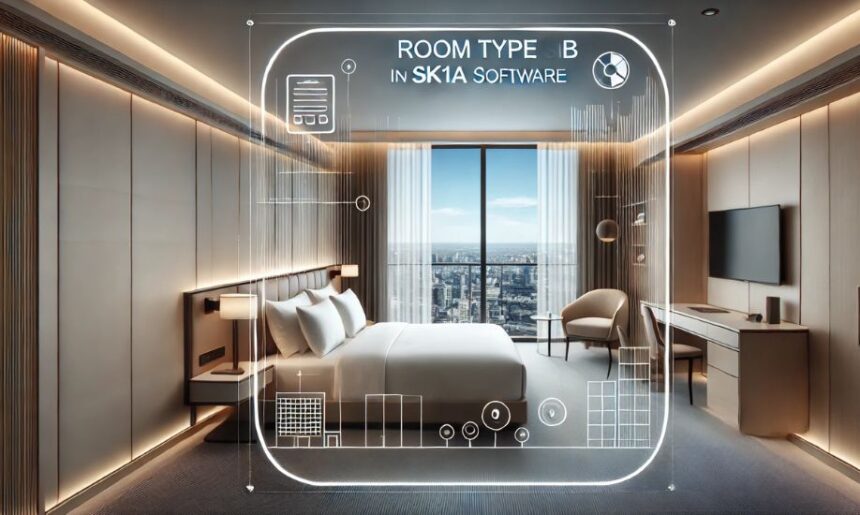Hotel management software like OPERA Property Management System (PMS) plays a critical role in streamlining operations, managing reservations, and improving guest satisfaction. One key aspect of OPERA software is its use of room type codes, which categorize rooms based on specific attributes. Among these codes, the designation “SK1B” often arises. But what exactly does room type SK1B mean in OPERA software? This article delves into its meaning, significance, and practical application.
What is Room Type SK1B meaning in Opera Software?
Room type SK1B in OPERA software is a customizable alphanumeric code used to define a particular room category in a hotel. While the exact meaning of SK1B can vary between properties due to customization options, its components typically indicate:
- S: This often stands for “Standard,” representing a basic or general room type.
- K1: This typically refers to “King bed” with a single bed configuration.
- B: This might denote an additional feature, such as a balcony, bath, or specific view.
For example, SK1B could signify a “Standard King Room with Balcony” in one property, but it might have a different meaning in another hotel based on their internal coding preferences. The flexibility of OPERA allows hotels to tailor these codes to suit their unique inventory and operational needs.
The Importance of Room Type Codes in OPERA Software
Room type codes like SK1B are essential in OPERA software for several reasons:
- Efficient Room Management: By categorizing rooms with specific codes, hotels can quickly assign accommodations that meet guests’ preferences and requirements.
- Streamlined Pricing: Different room types often have varying price points. Clear room codes help in accurate pricing and revenue management.
- Enhanced Guest Experience: Accurate room type coding ensures that guests receive the exact room they booked, contributing to higher satisfaction.
- Operational Clarity: Staff can easily understand the features and configurations of rooms, minimizing errors during booking or check-in.
How to Configure Room Types in OPERA Software
Configuring room types in OPERA software requires a structured approach. Here’s a general outline:
- Define Room Attributes: Identify key features like bed size, view, and amenities that distinguish one room type from another.
- Create Codes: Develop alphanumeric codes like SK1B that represent these attributes. Ensure the codes are intuitive and align with operational needs.
- Update System Settings: Input the room type codes into OPERA’s configuration settings, associating them with the corresponding room inventory.
- Test the Configuration: Conduct test bookings to verify that the codes function correctly within the system.
- Train Staff: Educate staff on the meaning and use of each code to ensure consistent application.
Examples of Custom Room Type Codes in OPERA Software
While SK1B is a common example, hotels often create a variety of codes to manage their inventory. Here are some examples:
- DQ2C: Deluxe Queen Room with Two Beds and a City View
- SP1P: Standard Room with a King Bed and Pool View
- EX2B: Executive Room with Two Beds and a Balcony
Each of these codes provides a snapshot of the room’s features, making it easier for staff to manage and assign rooms.
Challenges in Using Room Type Codes
Despite their benefits, room type codes can present challenges:
- Complexity: Overly complex codes may confuse staff, leading to errors in bookings.
- Inconsistency: If codes are not standardized, they can create confusion across departments.
- Training Requirements: Staff need proper training to understand and use the codes effectively.
To address these challenges, hotels should prioritize simplicity, consistency, and staff education when developing and implementing room type codes.
Best Practices for Managing Room Type SK1B meaning in Opera Software
To maximize the effectiveness of room type codes like SK1B, consider these best practices:
- Keep It Simple: Use intuitive and straightforward codes that are easy to remember and interpret.
- Regular Updates: Periodically review and update codes to reflect changes in room inventory or features.
- Staff Training: Conduct regular training sessions to ensure all employees understand the coding system.
- Documentation: Maintain clear documentation of all room type codes and their meanings for reference.
Conclusion: Why Room Type SK1B meaning in Opera Software
The room type SK1B in OPERA software exemplifies how effective categorization can streamline hotel operations. By tailoring codes to reflect room attributes, hotels can enhance efficiency, accuracy, and guest satisfaction. While the meaning of SK1B may vary between properties, its significance lies in its role as a building block of effective room management. With proper configuration and management, room type codes can transform the way hotels operate, providing clarity and consistency in daily operations.

![swimsuit edition [abbb] - 1.20 21 swimsuit edition - chapter](https://craftersgin.co.uk/wp-content/uploads/2025/01/swimsuit-edition-abbb-1.20-21-swimsuit-edition-chapter-150x150.jpg)




